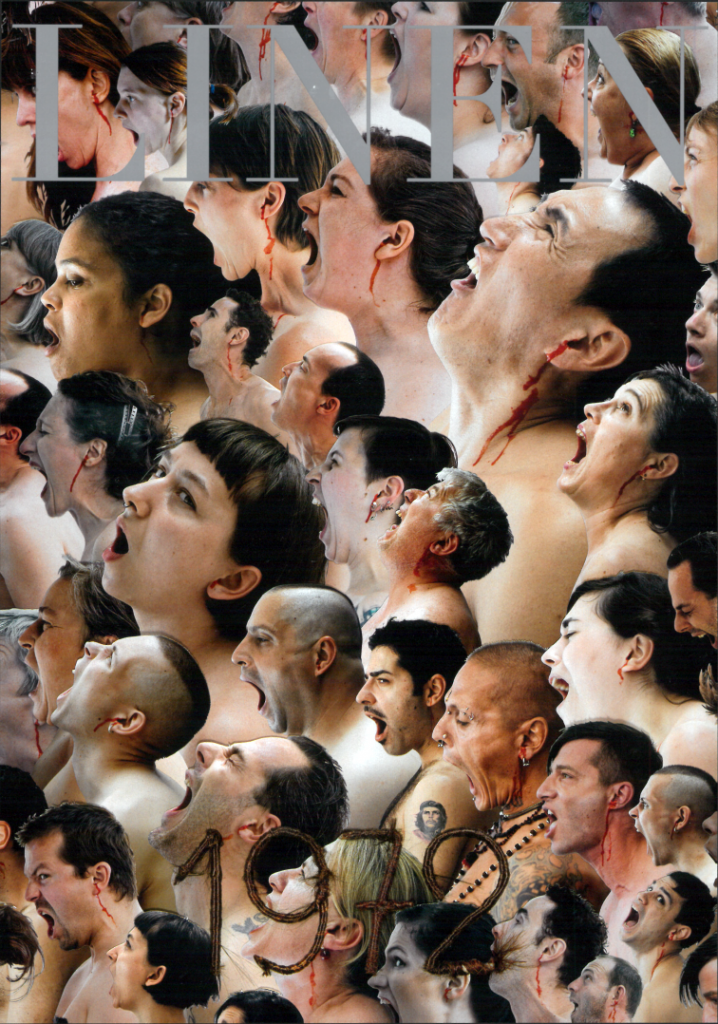Jaket 자켓 25
자켓에 수놓아져 있는, 베레모를 쓴 체 게바라Che Guevara[1] 의 상징적인 이미지는 전세계의 의류에서도 찾아볼 수 있다: 공산주의 영웅의 이 얼굴은 “노스탤지어의 상품화된 표현”이라고 불리었다. 체 게바라는 볼리비아의 20세기 여러 독재 집권기 중 하나가 진행중이던 1987년10월 9일 볼리비아에서 CIA(미국중앙정보부) 배후의 암살단에 의해 살해당했다- 거의 모든 암살사건들은 암묵적으로 혹은 공공연히 미국의 배후를 받았다. 1960년대와 1990년대 초반 사이 라틴 아메리카 대륙에선 억압과 대량학살과 고문이 비일비재 했고 미국의 훈련과 다양한 지원이 연루되어 있었다.
Representations in Holland had the woman at home spinning as the epitome of tranquil virtue, whereas women in a group were too sensual and wild. In Ireland young women in the home were seen as ‘unruly’, their idleness leading to “tearing hedges, robbing orchards or beggaring their fathers”.
English proto-capitalists instituted labour discipline.
홀란드에서는 혼자 있는 여성을 평온한 미덕의 전형으로 재현되는 반면 무리 지어 있는 여성들은 지나치게 선정적이거나 거칠게 표현되었다. 아일랜드에서는 가정에 있는 젊은 여성들을 ‘제멋대로’라고 여겼고, 그들은 게을러서 “울타리에 구멍을 내고, 과수원에서 도둑질을 하거나 아버지를 거지로 만든다’는 이야기할 정도였다.
영국의 초기 자본주의자proto-capitalists 들은 노동기강을 확립했다.
The Self-Employed Women’s Association of India was founded as a trade union. It was kick-started by migrant women working as cart-pullers in Ahmedabad’s cloth market, who were then living on the streets, and ‘head-loaders’, women carrying loads of clothes between the wholesale and retail markets.
인도 자영업 여성 협회는 노동조합으로 설립되었다. 이를 촉진한 것은 길거리에 살면서 아마다바드의 옷 시장에서 수레 끄는 일을 하던 이주민 여성들이자 도매와 소매 시장 사이에 많은 옷을 나르는 ‘헤드 로더’들이었다.
Well, obviously they knew my reputation, I mean, I don’t want to brag but I’ve dressed a lot of famous people. Maybe also, they knew I’d done a lot of my work with alpaca yarn, even though Bolivians themselves, the upper class, so to speak, they wouldn’t wear it; for them it was for their maid or their butler to wear alpaca.
글쎄, 분명히 그들은 내 명성을 알고 있었습니다. 내 말은, 자랑하고 싶지는 않지만, 나는 많은 유명인들에게 옷을 입혀왔습니다. 또한, 그들은 내가 알파카 실로 많은 일을 했다는 것을 알고 있었을 것입니다. 말하자면, 상류층 볼리비아인들은 알파카를 입지 않을지라도 말입니다. 그들에게 알파카는 하녀나 집사가 입는 것이었습니다.
